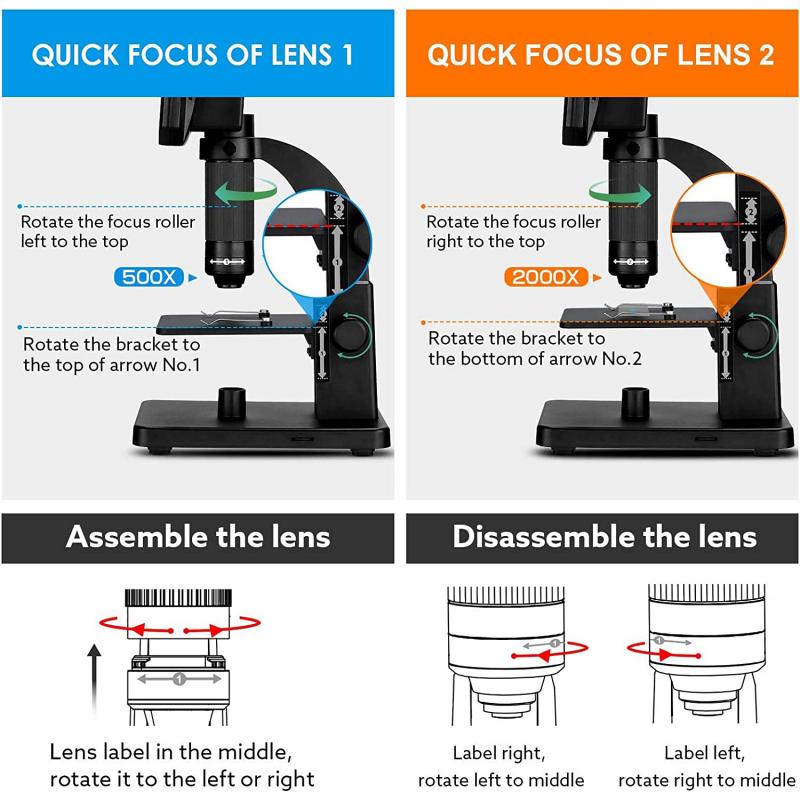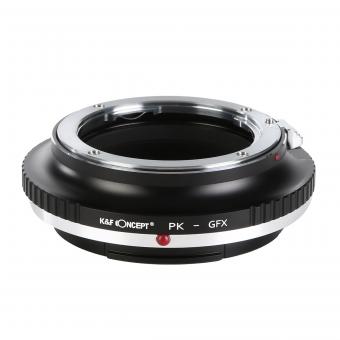Why Are Lenses In A Microscope Important ?
Lenses in a microscope are important because they allow for magnification and resolution of small objects that are not visible to the naked eye. The lenses work together to focus light onto the specimen, which is then magnified by the objective lens and further magnified by the eyepiece lens. This allows for a detailed view of the specimen, which can be used for scientific research, medical diagnosis, and education. The quality of the lenses is also important, as it affects the clarity and sharpness of the image. Modern microscopes use high-quality lenses made from materials such as glass or plastic, which are designed to minimize distortion and aberrations. Overall, lenses are a crucial component of a microscope and play a vital role in enabling us to see and study the microscopic world.
1、 Magnification
Lenses in a microscope are important because they provide magnification, which allows us to see objects that are too small to be seen with the naked eye. Magnification is the process of making an object appear larger than its actual size, and it is achieved by bending light rays as they pass through the lens. This bending of light rays causes the image to appear larger and more detailed than it would without the lens.
In addition to magnification, lenses in a microscope also provide resolution, which is the ability to distinguish between two closely spaced objects. This is important because many objects that are too small to be seen with the naked eye are actually made up of smaller parts that need to be distinguished in order to understand their structure and function.
Recent advancements in microscopy have led to the development of new types of lenses, such as super-resolution lenses, which allow us to see even smaller objects with greater detail than ever before. These lenses use advanced techniques such as fluorescence and laser technology to achieve resolutions that were once thought to be impossible.
Overall, lenses in a microscope are essential for understanding the structure and function of objects that are too small to be seen with the naked eye. They provide magnification and resolution, and recent advancements in microscopy have led to the development of new types of lenses that allow us to see even smaller objects with greater detail than ever before.

2、 Resolution
Lenses in a microscope are important because they play a crucial role in determining the resolution of the microscope. Resolution refers to the ability of the microscope to distinguish between two closely spaced objects as separate entities. The higher the resolution, the better the microscope is at distinguishing between small details in the specimen being observed.
The lenses in a microscope work together to magnify the image of the specimen being observed. The objective lens, which is located close to the specimen, magnifies the image and sends it to the eyepiece lens, which further magnifies the image for the observer. The quality of the lenses used in a microscope determines the clarity and sharpness of the image produced.
In recent years, there have been significant advancements in lens technology, particularly in the development of high-resolution lenses. These lenses are designed to provide greater clarity and detail in the images produced by microscopes. They are particularly useful in fields such as biology and medicine, where the ability to observe small details in cells and tissues is critical.
In addition to advancements in lens technology, there have also been significant improvements in the design and construction of microscopes. Modern microscopes are equipped with a range of features, such as digital imaging and computerized analysis, that allow for more accurate and detailed observations.
In conclusion, lenses are a critical component of microscopes, and their quality and design play a significant role in determining the resolution and clarity of the images produced. With the latest advancements in lens technology and microscope design, researchers and scientists are able to observe and analyze specimens with greater accuracy and detail than ever before.

3、 Contrast
Lenses in a microscope are important for several reasons, but one of the most crucial is contrast. Contrast refers to the ability of the microscope to distinguish between different parts of a specimen. Without proper contrast, it would be difficult to see the details of the specimen, and the image would appear blurry or indistinct.
Lenses in a microscope work by bending and focusing light, which allows the viewer to see the specimen in greater detail. The lenses also help to magnify the image, making it easier to see small details that would otherwise be invisible to the naked eye.
In recent years, there has been a growing interest in using advanced imaging techniques to study biological specimens. These techniques often rely on specialized lenses and other optical components to achieve high levels of contrast and resolution. For example, confocal microscopy uses a series of lenses and mirrors to create a 3D image of a specimen, while super-resolution microscopy uses specialized lenses to achieve resolutions beyond the diffraction limit of light.
Overall, lenses are an essential component of any microscope, and they play a critical role in allowing scientists and researchers to study the intricate details of biological specimens. As technology continues to advance, we can expect to see even more sophisticated imaging techniques that rely on advanced lenses and other optical components.

4、 Numerical aperture
Lenses in a microscope are important because they allow us to magnify and visualize objects that are too small to be seen with the naked eye. The lenses in a microscope work together to produce a magnified image of the specimen being observed. The quality of the lenses used in a microscope is critical to the clarity and resolution of the image produced.
One of the most important factors in determining the quality of a microscope lens is its numerical aperture (NA). The NA is a measure of the lens's ability to gather and focus light. A higher NA means that the lens can gather more light and produce a sharper, more detailed image.
In recent years, there has been a growing interest in using high-NA lenses in microscopy to improve the resolution of images. This has led to the development of new types of lenses, such as super-resolution lenses, that can produce images with resolutions beyond the diffraction limit of light.
Another important aspect of microscope lenses is their ability to correct for aberrations. Aberrations are distortions in the image caused by imperfections in the lens or other factors. Modern microscope lenses are designed to minimize aberrations and produce images that are as clear and accurate as possible.
In conclusion, lenses are a critical component of microscopes, and their quality and design are essential to producing clear, high-resolution images. The numerical aperture is an important factor in determining the quality of a microscope lens, and recent advances in lens design have led to the development of new types of lenses that can produce images with unprecedented resolution.








































